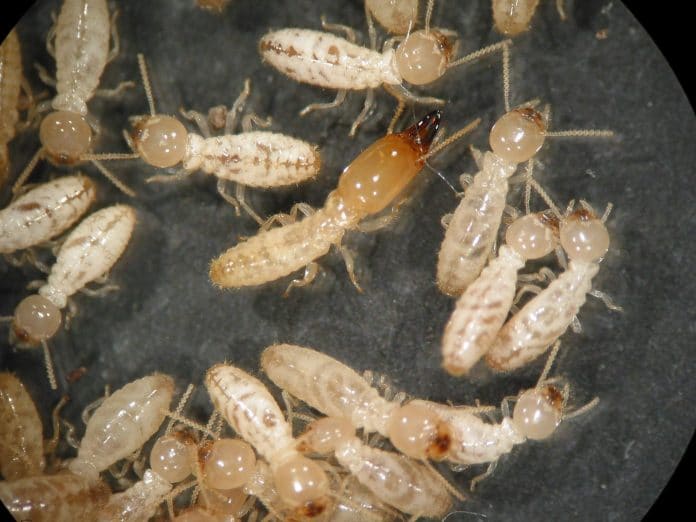Jim E. Davis
UF/IFAS Extension Multi-County Director
Sumter and Hernando Counties
Did you know that the estimated damage worldwide from termites is about $40 billion dollars? 80% of that is due to subterranean termites. Every county in Florida is affected by termites. Every home can be affected. Concrete or wood, termites can gain entry if the conditions are right and if there is an entry point within your foundation or other parts of your home. To understand how to prevent and manage termites, you must first know what they look like and a little about their biology.
Termites are soft-bodied insects that are cryptobiotic. This basically means they live in concealment. Established colonies can range in the thousands to millions. If you suspect you have termites, the first thing you need to do is find out if it is indeed a termite. Interactions with termites usually occur during swarming. This is when the reproductive, or alates, start emerging and fly out of their mud tubes. These are the winged versions. Keep in mind that some ant species do the same thing. If you see flying insects in your home, capture some and put them into a jar or vial of at least 70% rubbing alcohol. Contact your local UF/IFAS Extension service for identification.
Florida has 23 species of termites. There are dampwood, drywood and subterranean. Dampwood termites are very uncommon. Drywood termites can be found in attics, cabinets, and furniture. Especially antique furniture. Subterranean termites are in the ground, forming galleries that enter your house through small entry points. Correct identification of these types of termites is also important because drywood require different treatments than subterranean termites. Signs of drywoods include the presence of their frass or excrement. These six-sided pellets are usually found in piles or spread around the wood they are in. If you have drywoods, you need to contact a pest management professional to eliminate the colony. The presence of subterranean termites can include the presence of their mud tubes. These are tubes of material that emerge from the ground and act as highways for the termites travelling inside. Florida has both native and non-native subterranean termites, so you need to know which one you are dealing with. Management and control of Eastern subterranean termites is different than the invasive Formosan termite. Again, if you suspect that you have termites, contact a pest management professional to resolve the problem. Any questions regarding treatment options, contact us at the UF/IFAS Extension Hernando County office.
What can you do to prevent termites around your home? Maintain a 6” inspection space along your foundation. This is to check for mud tubes. I would recommend pulling mulch away from the foundation. Also, do not plant any plants next to the foundation of your home and keep plants trimmed so that they are not touching your house. This helps keep other pests away. All plants should be planted at least 2ft away from your home. Keep wood away from your house. This includes landscape timbers. You also need to keep any water away from the foundation of your home. This means directing downspouts away and preventing irrigation from hitting your house. Excessive moisture along the foundation makes a great place for subterranean to thrive in. All condensate lines and downspouts should be at least 1ft away from the structure sidewall.
When choosing a pest management professional, do your research. For more information visit https://edis.ifas.ufl.edu/in1269 to learn how to select a pest control service. For more information on preventing termites, visit https://edis.ifas.ufl.edu/in1277
Extension programs are open to all persons without regard to race, color, sex, age, disability, religion, or national origin.

